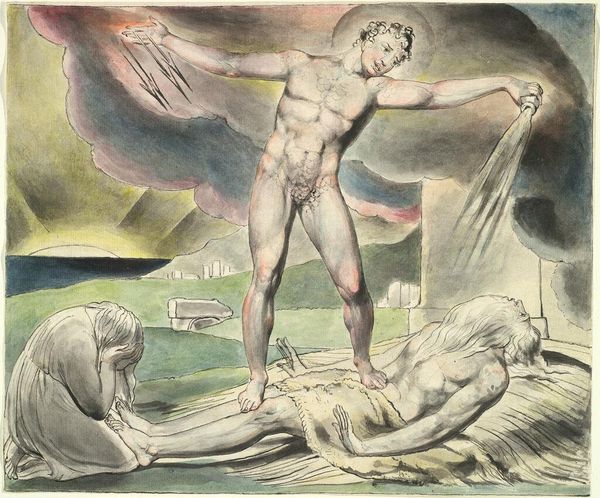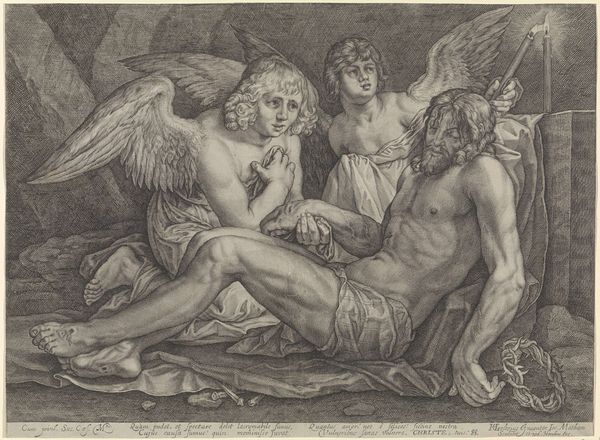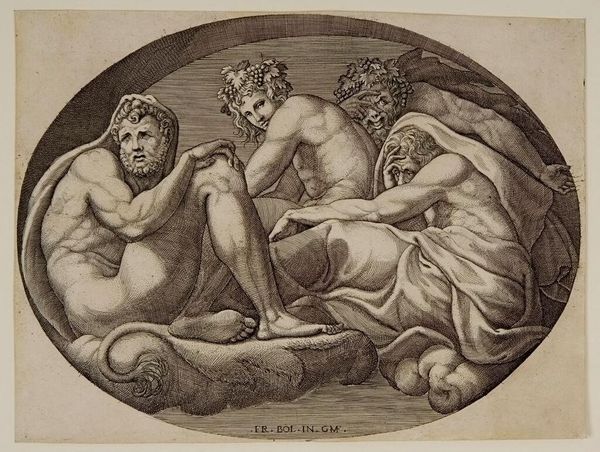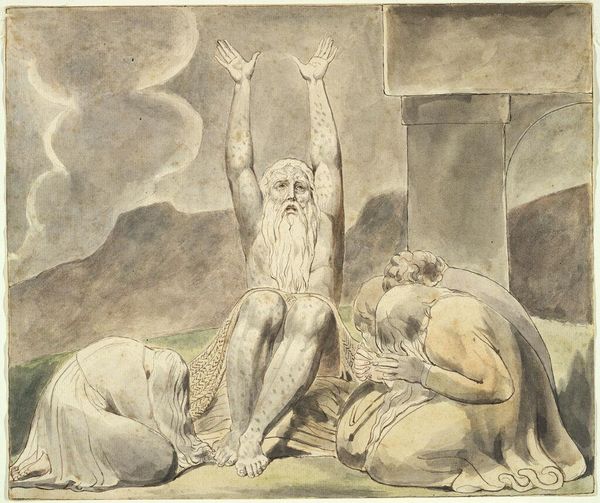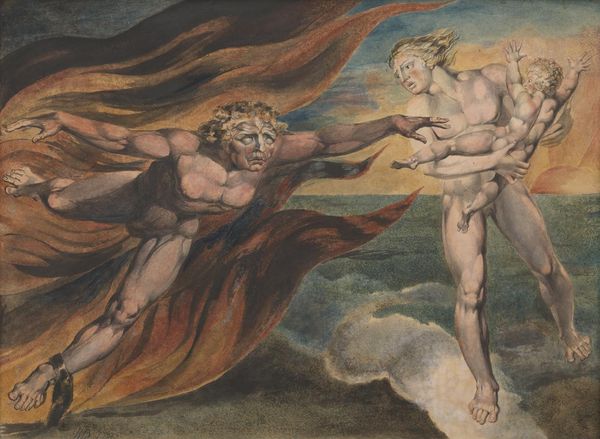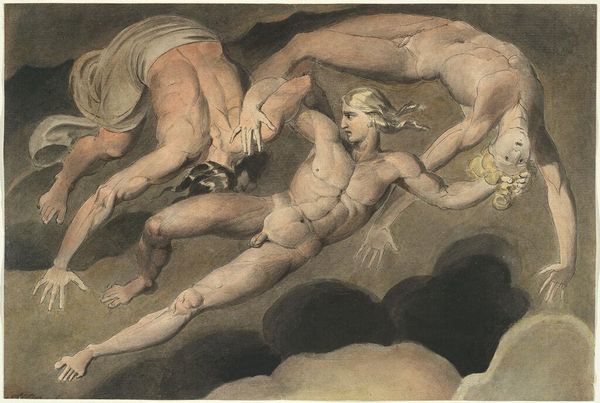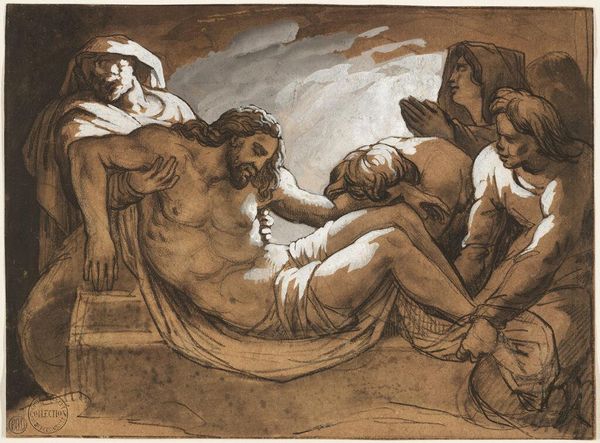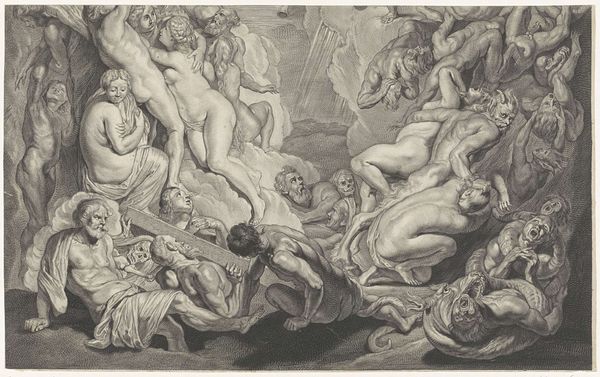
Dimensions: actual: 34 x 45.6 cm (13 3/8 x 17 15/16 in.)
Copyright: CC0 1.0
Curator: Here we have William Blake’s “Philoctetes and Neoptolemus at Lemnos,” housed at the Harvard Art Museums, a piece measuring approximately 34 by 46 centimeters. What's your initial take? Editor: The starkness hits me first. The figures seem almost flayed, their forms rendered in a way that highlights their vulnerability, almost as if the skin is peeled back to reveal what lies beneath. Curator: Precisely. Blake masterfully taps into the mythos, doesn't he? Philoctetes, abandoned on Lemnos, embodies suffering and isolation, a theme Blake often explored. The bow, piercing his hand, shows the price of the weapon. Editor: And the materials… This watercolor and ink technique serves the drama. The washes feel swift, urgent – perhaps mimicking the rash decisions and dire consequences the figures grapple with. What do you make of Neoptolemus’ stance? Curator: Torn, isn't he? He represents the conflict between duty and empathy, a recurring theme in Blake’s work. His stance is not one of triumph but of agonizing internal struggle, reflecting moral ambiguity. Editor: It is the story of labor and sacrifice, visible on Philoctetes’ body, set against Neoptolemus’ armor. The contrast hints at the social and personal costs of war. Curator: Absolutely. The image lingers, not just as a depiction of a classical story, but as a mirror reflecting our own moral dilemmas. Editor: It leaves me pondering the cost of glory and the burden of choice, rendered so powerfully in ink and watercolor.
Comments
No comments
Be the first to comment and join the conversation on the ultimate creative platform.
